CREATING AND UNDERSTANDING YOUR AC
CREATING AND UNDERSTANDING YOUR AUTHENTICITY COMPASS
Before doing the work of this section, be sure you understand the two models that make up the AC. (They are discussed in the “Theoretical Foundation” section of this website.)
Step ONE: Identify your preferences: your perceiving-judging (PJ) pair
Exercise 1. Discovering Your Preferences
In this exercise, you will identify your dominant PJ pair. This is dictated by whether your perception preference is for sensing (S) or intuition (N) and whether your judgment preference is for feeling (F) or thinking (T). If you have taken the MBTI, the middle two letters of your profile indicate your dominant PJ pair.
Instructions: Fill out the following two tables to help you determine the way you prefer to perceive and the way you prefer to judge your circumstances.
1. Lock into a completely relaxed and comfortable state.
2. Read the two items across each row, and check the one that most accurately describes your preferred mode of behavior. If neither choice feels appropriate, check nothing. If both choices seem appropriate, check both.
3. After completing each table, tally the check marks in the two columns. One column in each table should have more marks than the other, indicating a preference has emerged.
4. Use the Reveal Tables at the end of the exercise to determine the column header that identifies your preference (but please do not look ahead). If no preference emerges, use the suggestions provided at the end of the exercise.
Table 1. Preference Table A
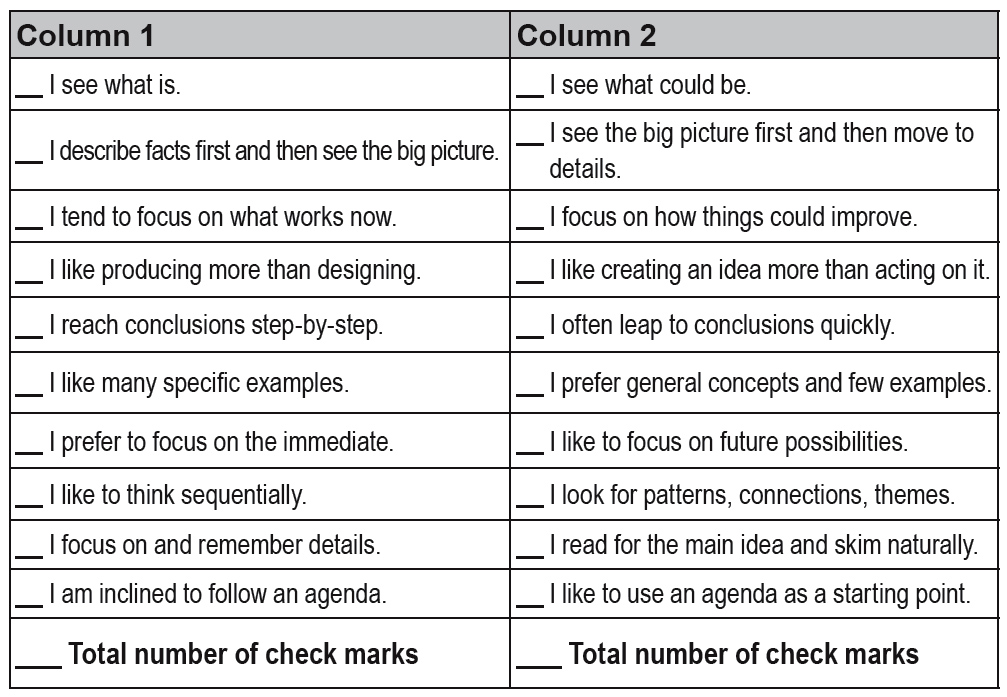
Circle the column with more check marks (circle one): Column 1 or Column 2
Table 2. Preference Table B
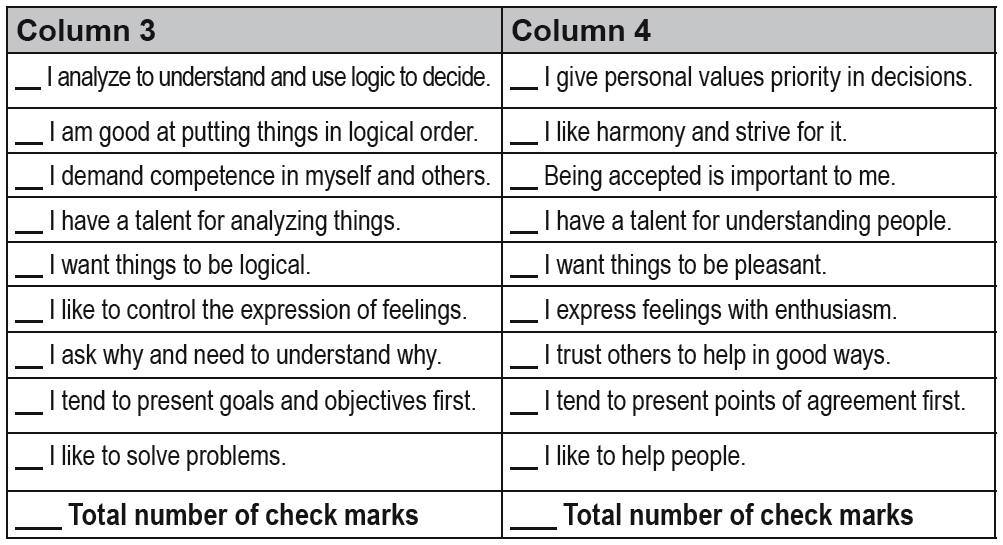
Circle the column with more check marks (circle one): Column 3 or Column 4
The Reveal: Your Preference Table Results
Table A reveals your perception preference. So if you have more check marks in:
- Column 1, it is likely your perception preference is sensing, S
- Column 2, it is likely your perception preference is intuition, N
Please document your perception preference here (S or N)*____________
Table B reveals your judgment preference. If you have more checkmarks in:
- Column 3, it is likely your judgment preference is thinking, T
- Column 4, it is likely your judgment preference is feeling, F
Please document your judgment preference here (T or F)*_____________
Combining results from Tables A and B, document your resulting preferred PJ pair:
(Either NT, NF, ST, or SF)*:___________
Again, these two letters will also designate your DQ (dominant Authenticity Compass quadrant), so commit them to mind for future use.
*If no preference emerges: If you were not able to determine a result for one or both of the above tables, it is suggested that you do one of the following: a) redo the tables at a later time, b)look at the table in step four below and find the row with which you most closely identify and assume that is your DQ until such time you can determine it with more accuracy, or c) refer to the middle two letters of an MBTI assessment that you can obtain at www.cpp.com.
Having a perceiving-judging preference means you feel most comfortable and natural expressing one of the four defined perceiving-judgment quadrants: NT, ST, SF, NF. Find your perceiving-judging pair in the PJ (perceiving –judging) framework.
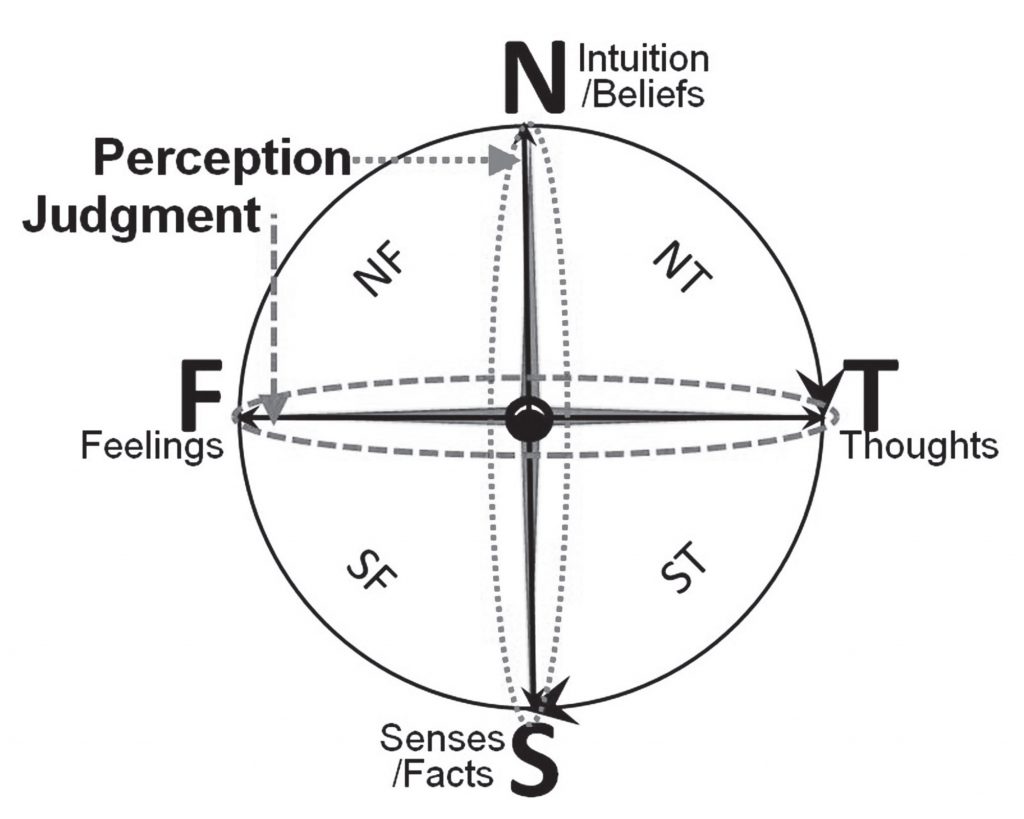
Step TWO: Find the PDCA Activity (and its related skills) that corresponds to your PJ pair in the following list:

Step THREE: Identify your Authenticity Compass Dominant Quadrant (DQ) in the chart below:
Self-awareness using the AC starts with knowing your dominant quadrant. Is it Q1, Q2, Q3, or Q4?

DQ awareness is meaningful because it explains how you like to show up in the world, interact with others, and make decisions.
DQ knowledge also provides insight regarding where it is easy for you to contribute to a group effort.
- Q1 strongly supports Planning … which is driven by beliefs (N) and rational thinking (T).
- Q2 strongly supports Doing (execution) … which is driven by facts (S) and rational thinking (T).
- Q3 strongly supports Checking (monitoring) … which is driven by facts (S) and feelings (F).
- Q4 strongly supports Action (motivating self/others to make the required changes identified through monitoring) … which is driven by beliefs (N) and feelings (F).
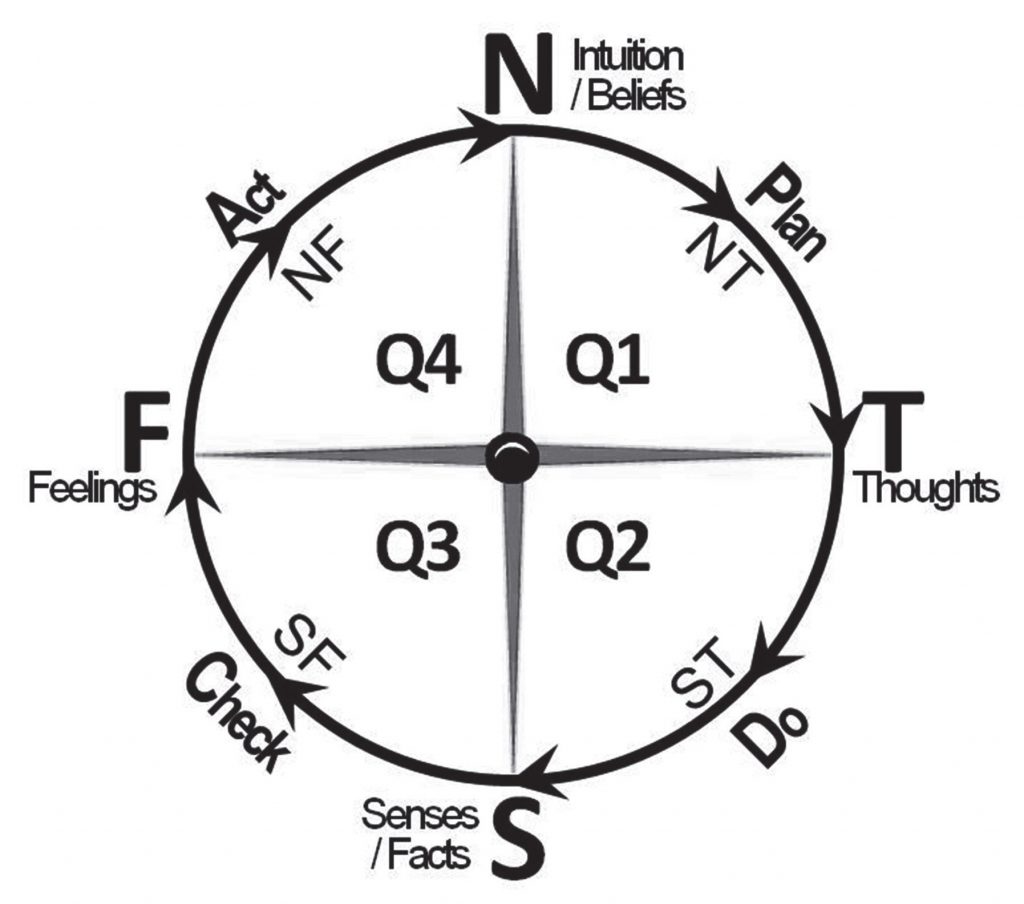
Step FOUR: Identify the characteristics and strengths of your dominant quadrant
Using the ACQ Characteristics Table below, identify the good news of your AC – what are your inherent strengths? what does your DQ suggest may be the circumstances in which you feel most comfortable? what are the related behavioral characteristics that’s serve you well in life?
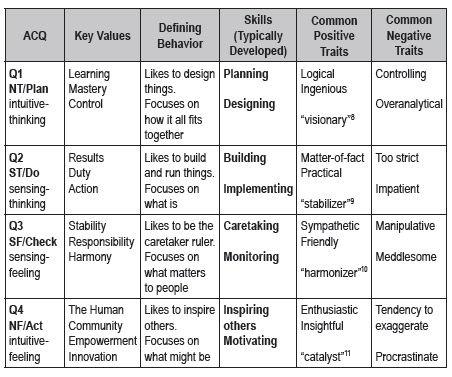
Step FIVE: Identify the opportunities for development related to your DQ.
Success in the life requires the ability to interact with a variety of people and deal with many diverse circumstances. Referencing the ACQ Characteristics Table, identify the skills and characteristics that you might want to develop or strengthen to be better prepared to deal with life’s challenges.
